
Built on the blueprints made by the ASUS ROG Phone 2 last year, this year’s ASUS ROG Phone 3 packs quite a lot of improvements. Packing a faster screen and a more powerful chipset among others, is the ROG Phone 3 a worthy upgrade for the most hardcore of mobile gamers? Let’s find out.

| Chipset | Qualcomm Snapdragon 865+, 3.1GHz |
| Screen | 6.59-inch AMOLED, 2340 x 1080, 144Hz, HDR10+, 270Hz Sampling, 650nits HBM, 1000nits Peak, 113% DCI-P3, Gorilla Glass 6, 10-point Multi-Touch |
| RAM | 12GB, 16GB |
| OS | Android 10 with ROG UI |
| Rear Camera | 64MP f/1.8 Sony IMX686 Main, 13MP f/2.4 Ultrawide, 5MP f/2.0 Macro |
| Front Camera | 24MP f/2.0 |
| Storage | 128GB, 256GB, 512GB, UFS 3.1 |
| Network | Dual-SIM, 5G |
| Connectivity | Dual-band WiFi 802.11ax, 2×2 MIMO, Bluetooth 5.1, NFC, USB Type-C |
| Battery | 6,000mAh, 30W Fast Charging, QuickCharge 4.0, USB PD 3.0 |
| Others | Quad Microphones with ASUS Noise Reduction, Dual Front-Facing Speakers |
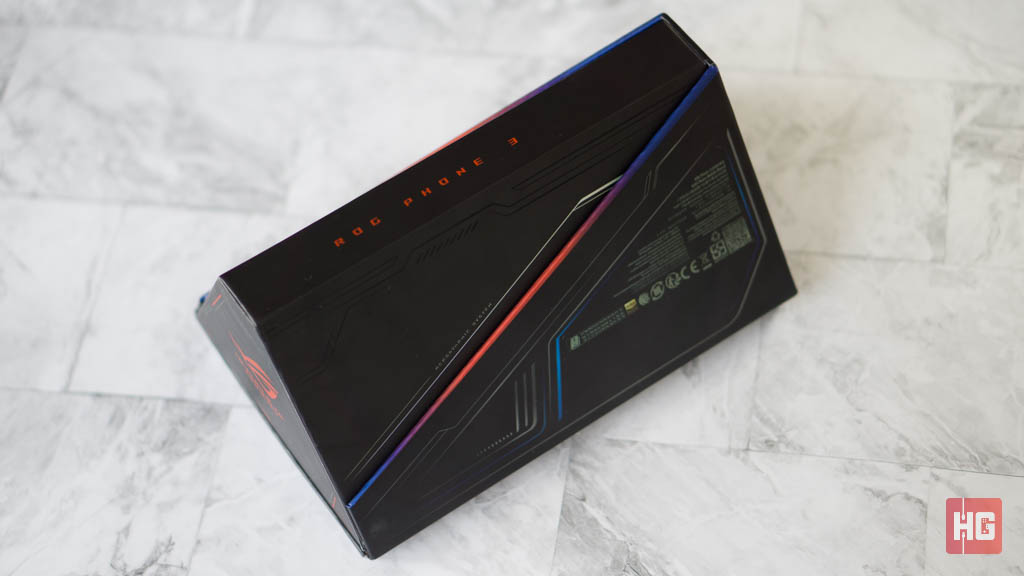
The ROG Phone 3 keeps the tradition of using a hexagonal triangle for the packaging, which gives off an undoubtedly gamer vibe for the box. Unlike its predecessors, however, the box now slides out instead of being laid out in front of you once opened.
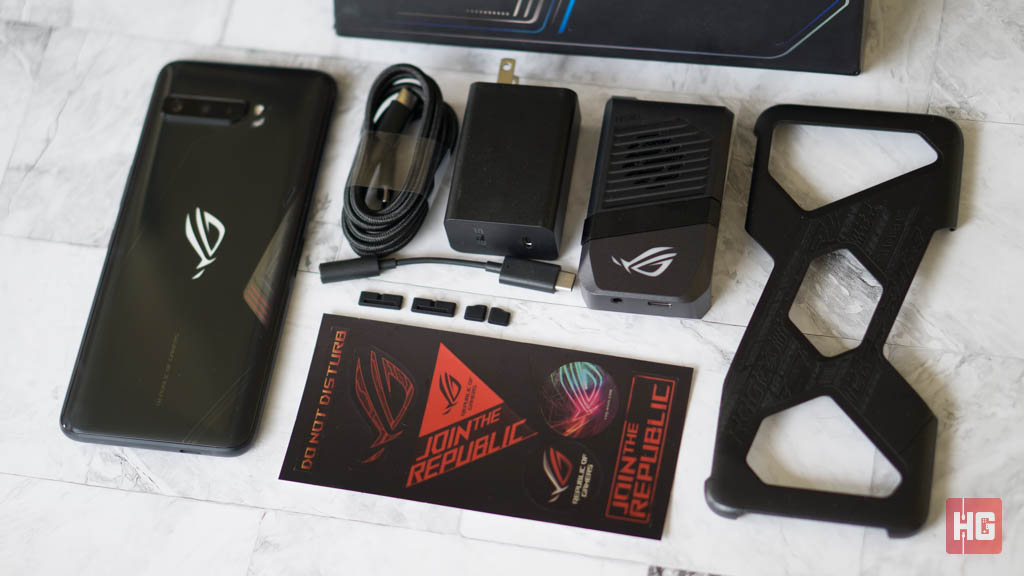
The smartphone comes with most of the accessories you’ll need to keep playing as well as a few extras. Inside is a bumper case, a braided USB Type-C cable, a 30W Fast Charging adapter, its AeroActive Cooler 3, a USB Type-C to 3.5mm jack adapter, an ROG-themed SIM ejector pin, a few stickers, and additional rubber plugs for its ports.
Unfortunately, the ROG Phone 3 doesn’t come with its own earphones. This is quite disappointing since it is regarded as one of the most powerful gaming flagship smartphones in the market at this time. One would think that they would be at least be getting a USB Type-C earphones with their expensive smartphone.

Although the ROG Phone 3 retains the same design language from previous entries, it has some distinct improvements to set it apart. Let’s start with the display. It has the same 6.59-inch 19.5:9 AMOLED screen without any notches or punch-holes to keep the gaming experience interruption-free. Though similar in size, it is now faster with its 144Hz refresh rate and 270Hz sampling rate allowing for a smoother gaming experience.
In addition to its speed, the ROG Phone 3 has one of the best displays we have seen in a smartphone this year. With 111.3 DCI-P3 and 153.7% sRGB coverage, the screen can reproduce balanced, natural colors. Its display sports max brightness of 650nits which allows for undisturbed usage even if it’s under direct sunlight. HDR10 and HDR10+ are also supported, which ups the entertainment value of movies and series so long as they support it.

As mentioned, its display does not employ they use of a notch or a punch-hole for its camera. This means that there are large bezels at the top and bottom in comparison to the flagship smartphones we have today. Its dimensions are also kept the same as the ROG Phone 2 in order to preserve compatibility for previous generation accessories.

The additional space at the top and bottom are being used to house two stereo speakers powered by Dirac’s GameFX instead of being just eyesores. The ROG Phone 3’s audio system are pretty decent pumping out punchy bass and solid highs although we wouldn’t want to use it as a primary driver for high-quality music as its sound stage is a bit tight and the sound signature has been tuned for gaming instead of accuracy.
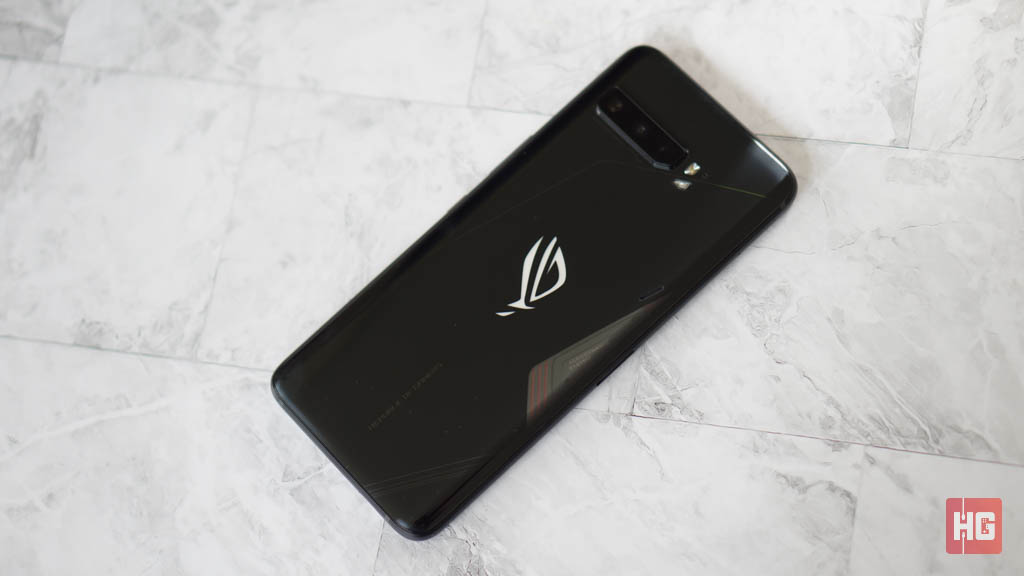
Its rear design stays largely similar to that of its predecessor albeit some of the cyberpunk lines have been removed in order to make a more minimalist and stylish package. There is still a bit of flash on the smartphone especially the ROG logo smack in the middle that lights up in RGB, which can be customized via the Armoury Crate. If you want to go the extra mile for RGB goodness, the Lighting Armor Case can increase the area of RGB lighting.
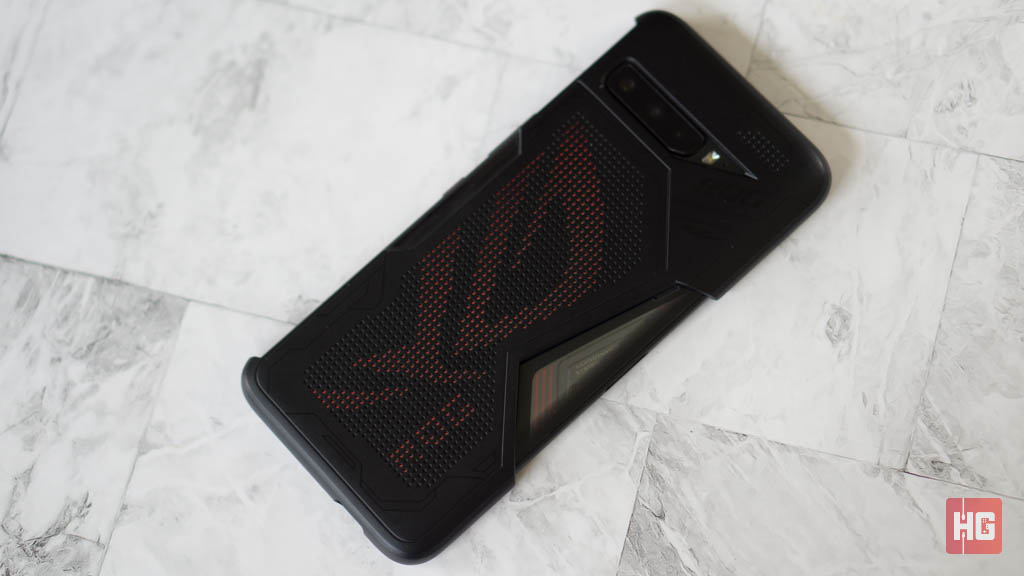
The whole back and front of the smartphone is covered in Gorilla Glass, which leads to a truly solid feel all throughout. But since the back is made out of glass, there is a bit of slipperiness present while handling the smartphone. It might be nice to look at but it feels a bit weird especially when you’re used to the feel of a case or a matte rear surface.
ASUS adds AirTrigger 3 on the already existing buttons such as the volume rocker and the power button. Found on the left- and right-hand side portion of the device when on landscape mode, they act as additional buttons where you can map other functions such as aiming, reloading, or activating skills while in-game. These are handy to use as they open up more options for control. You can adjust the sensitivity of these buttons via the Armoury Crate Software.
The ROG Phone 3 has a total of 3 USB Type-C ports: one is located at the bottom for charging while the other two are placed at the left-hand side ready where you can mount its AeroActive Cooler 3. You can also use one of the side ports for charging while you’re playing. It also has a kickstand that you can use if you’re watching videos on a flat surface.

Plugging the AeroActive Cooler 3 itself has a single USB Type-C that can act as a pass through for charging the smartphone. In addition, the cooler comes with a 3.5mm audio jack for gamers who prefer wired earphones.
The ROG UI is one of the most polarizing aesthetic choices in the ROG Phone series. Whether you like it or not, it is undoubtedly distinctive compared to other UIs that manufacturers offer. ASUS has really banked on the gamer aesthetic with angled lines and vibrant circular iconography with just a bit of brightness coming out the brightness.
Despite the radical change in aesthetic, the ROG UI comes with all the standard options from an Android 10 device. Options such as quick access, a pull-down control center, split-screen apps, and gesture navigation are present on the device.
One of the largest addition to the ROG UI for the ROG Phone series is the Armoury Crate and Game Genie. Launching Armoury Crate lets you access tons of customization options for the smartphone. The software allows you to have a Game Profile for each game installed on your smartphone, varying refresh rates for different games, set mapping for the AirTriggers 3, sensitivity levels for the triggers and the screen, tune the RGB lighting, as well as the performance levels once you activate X mode.
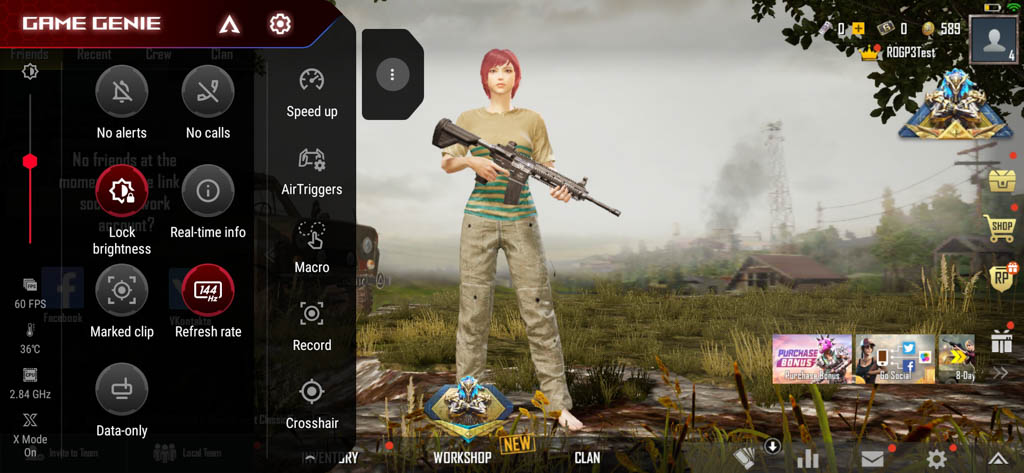
Game Genie, on the other hand, is the ROG Phone 3’s performance overlay for games. Swiping from the left while in-game will bring up the menu where you can toggle some options to improve gameplay. Simple toggles such as notifications are available while there are more advanced options such as macros, recording, and crosshair that you can fiddle around with.
Helpful information such as framerate, temperature, and clock speeds are displayed as well. Switching to and from different refresh rates is made quick and easy by the software without going back to the settings menu.
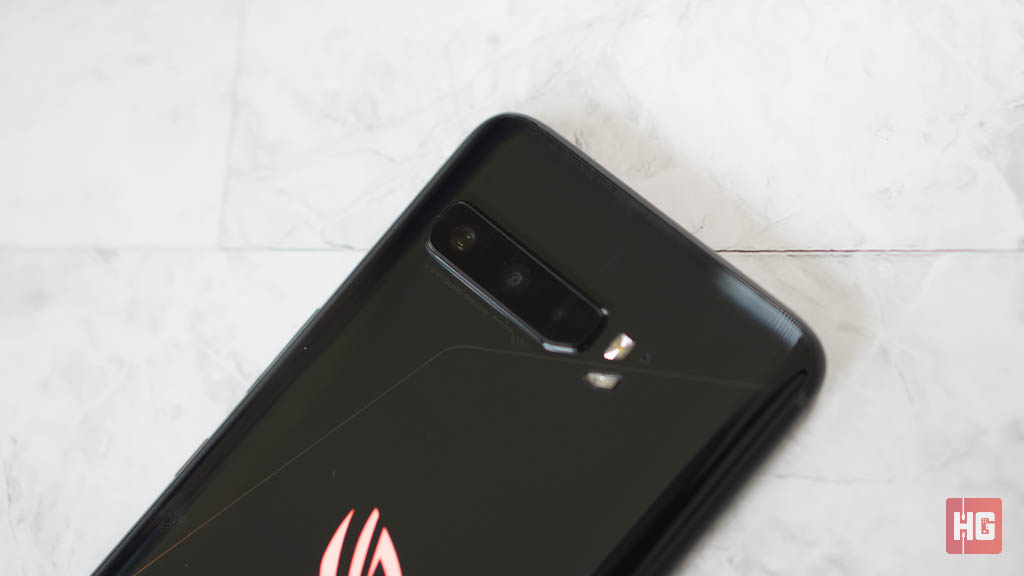
The ROG Phone 3 sticks to a triple-camera setup for its rear cameras rather than the quad cameras that we are getting used to seeing on flagships and midrange smartphones today.
Headlining for its camera department is a 64MP f/1.8 main camera powered by a Quad Bayer Sony IMX686 sensor. While sheer specifications put it somewhere near the numbers found on some of the upper-midrange and flagship smartphones, taking actual photos leave something to be desired.
Photos taken by the ROG Phone 3 are fairly detailed with good dynamic range under well-lit conditions, photos taken away from the a good light source such as a dimly lit interior tend to show some level of noise that takes away from their overall quality.
Its 13MP f/2.4 ultrawide is surprisingly effective in getting good photos given that you’re in a place with good lighting. Details are preserved on textures and colors are punchy without being too overbearing even with HDR Mode turned on.
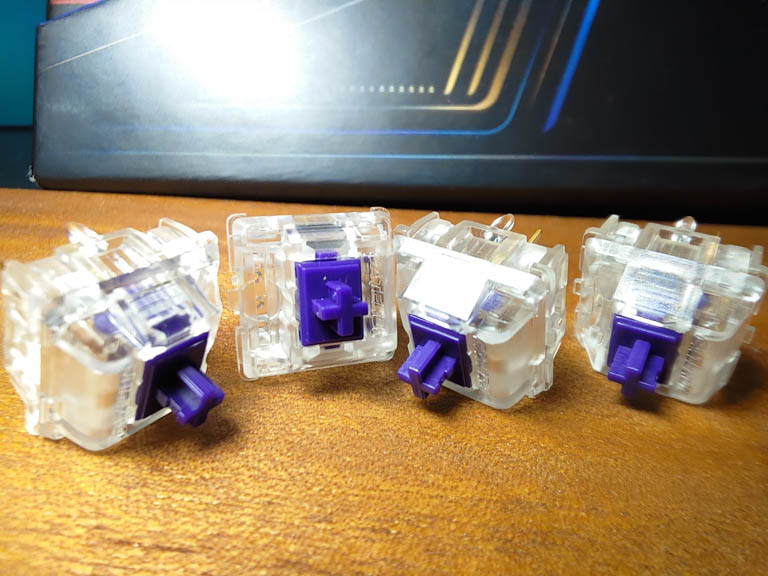
Meanwhile, its 5MP f/2.0 captures a lot of detail on shots especially in the middle of the frame. There is a significant loss of detail moving out to the edges, which means that macro shots should be exclusively taken with the subject right in the center.

This is where the ASUS ROG Phone 3 can truly stretch its legs and show everyone what it can do. Powered by a Qualcomm Snapdragon 865+ clocked at up to 3.1GHz and 16GB of RAM, you’d be hard-pressed to find a smartphone that can match the performance it offers.
It comes with several performance modes: standard mode and several levels of X Mode. X Mode allows the smartphone to push its chip further but with a higher heat output. In order to get the maximum out of the ROG Phone 3, you’ll need to plug-in the AeroActive Cooler 3 to help with cooling.
Running benchmarks were made trivial by the ROG Phone 3 due to the sheer processing power of the Snapdragon 865+. Even on its standard mode, it produced whopping numbers with more than 600,000 points in AnTuTu and over 12,000 in PCMark Work 2.0.
Activating X-Mode by long pressing one of the AirTriggers moderately increases the benchmarks achieved by the smartphone. Allowing for more bragging rights over smartphones in a similar price range.
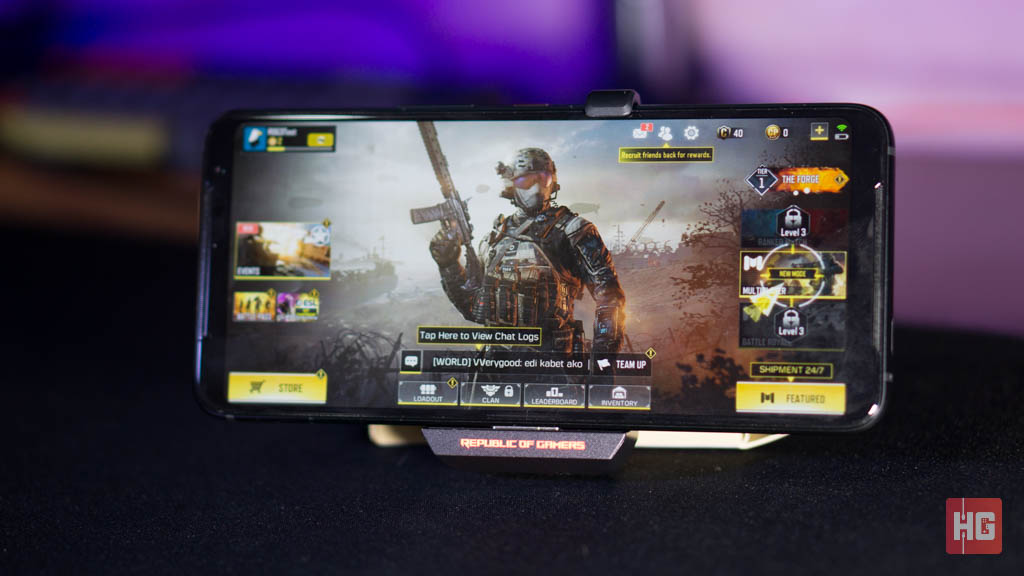
Adoption of 144Hz in the mobile games is still a bit lackluster even in 2020, however, some games do support it like Dead Trigger 2 and Vainglory. We have decided to mix some of the more popular games as well as games with high refresh rate support to see what kind of framerate the ROG Phone 3 can produce.

The ROG Phone 3 maintained high and steady framerates on all the games we played. 60fps-locked titles such as Call of Duty: Mobile, PUBG Mobile, and Mobile Legends did not pose any problems for the device. Heavier titles such as Dead Trigger 2 with support for 144fps also did not faze the device in anyway.
The ROG Phone 3 has a massive 6,000mAh battery, which should keep you playing throughout the day. Despite the large battery, ASUS has decided to stick with 30W charging instead of faster solutions. It seems that they are more concerned with the longevity of the battery rather than the wait to fill it. In our experience, the smartphone can filled up to 100% from empty in around 2 hours which is a bit pedestrian given that it has a flagship price.
In order to extend the lifetime of the battery, the ROG Phone 3 employs quite a few tricks in their software. You can now set custom limits to the charge capacity via the PowerMaster app through the battery settings. There’s a 10W Slow Charging mode that can decreases the heat output of the battery while charging.
Passthrough charging is also supported by the ROG Phone 3. This lets the smartphone to get power directly from the plug instead of the battery once it’s done charging instead of the smartphone using the battery and the battery getting trickle charge throughout the charging session.
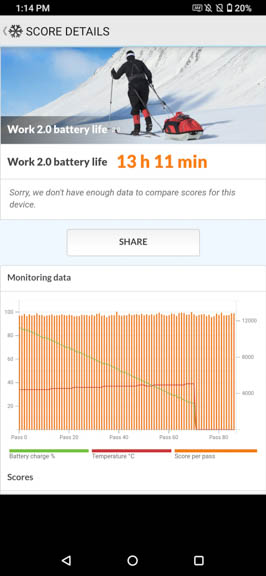
In terms of battery benchmarks, the smartphone is able to reach more than 13 hours of playtime with medium brightness and volume in PCMark Work 2.0. This is pretty impressive given that the test was done with the display running at 144Hz. If you want to get a few more hours of usage, you can switch to 60Hz to reduce battery drain.

Like other entries in the ROG Phone series, the ROG Phone 3 is relatively weak in the camera game compared to similarly priced smartphones. Charging is a bit last generation as well with other manufacturers now pushing 120W charging onto their devices in order to keep charging time down.
There is one aspect, however, that the ASUS ROG Phone 3 does extremely well: gaming. With a 144Hz display with awesome colors as well as a chipset that can handle everything that you can throw at it, the ROG Phone 3 is undoubtedly a premiere gaming smartphone for the hardcore.

Priced starting at PhP 49,995, if you want a well-rounded smartphone experience, then it might disappoint you with its unremarkable camera performance, big footprint, and comparatively slow charging. But If you value gaming over anything else, the ROG Phone 3 will be the smartphone for you.
